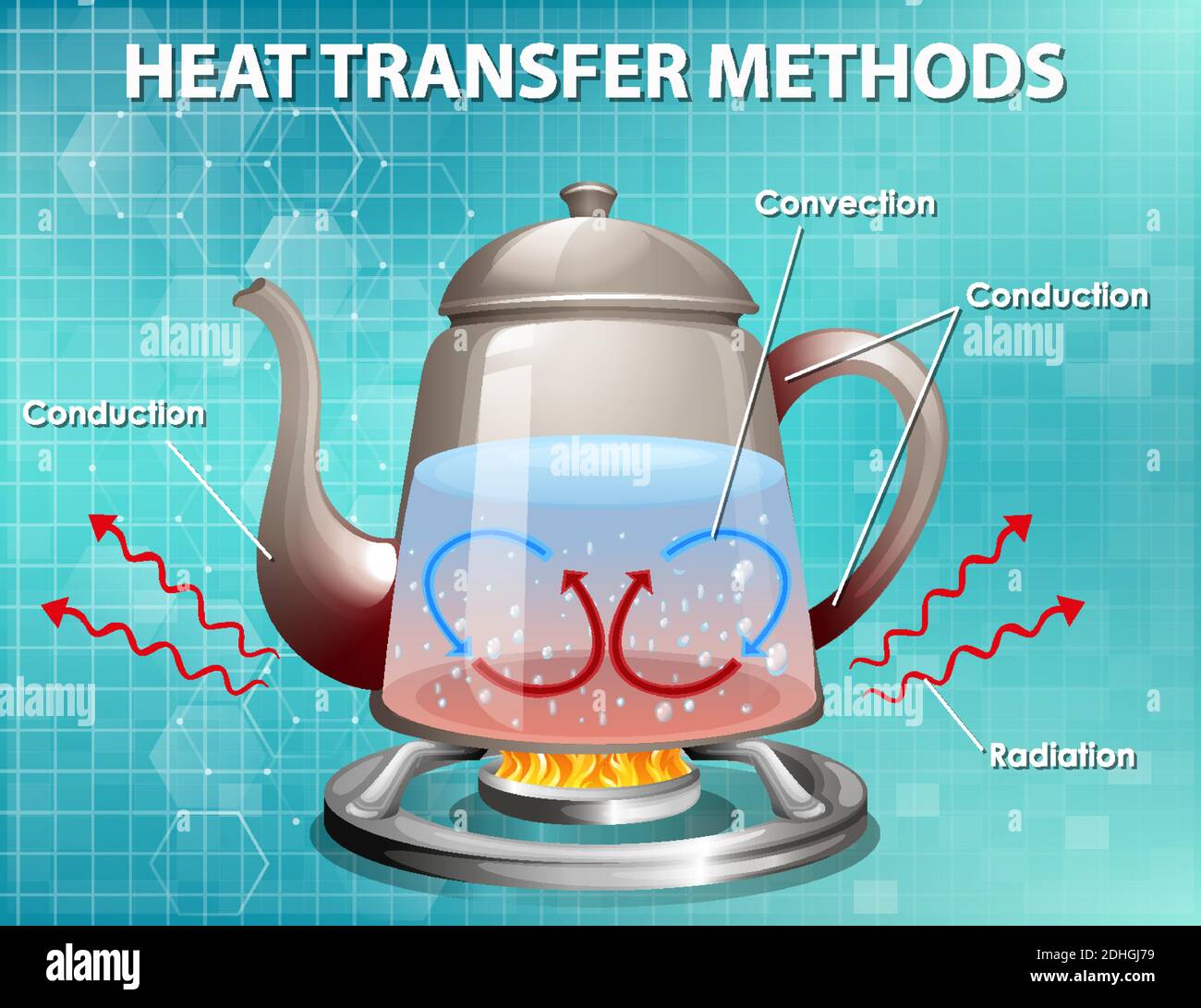
In this illustration, a molecule in the lower-temperature region (right side) has low energy before collision, but its energy increases after colliding with a high-energy molecule at the contact surface. Collisions occurring at the contact surface tend to transfer energy from high-temperature regions to low-temperature regions. This is because the air is a poor conductor of heat.\): Molecules in two bodies at different temperatures have different average kinetic energies. However, this is a minor Heat Transfer method for warming the atmosphere since it only affects the air in contact with the earth’s surface. The conduction in the atmosphere occurs at the zone of contact between the atmosphere and the earth’s surface by terrestrial radiations. The flow continues till the temperature of both objects reaches an equilibrium or the contact is broken. This process of transferring heat is known as conduction. When two objects of varying temperatures come in contact, heat energy flows from the warmer object to the cooler one.

Hence, it can be safely said that the energy leaving the Earth’s surface heats up the atmosphere more than the incoming solar radiation. But the atmosphere is opaque to long waves absorbed by atmospheric gases, particularly carbon dioxide, water vapour and other greenhouse gases. The atmosphere is transparent to short waves, thus resulting in escaping of short waves to space.

The re-radiating heat from the Earth’s surface is called terrestrial radiation. The Earth tends to re-radiate heat that it had absorbed from the Sun, at much longer wavelengths (thermal infrared radiations). On the other hand, the Earth has a cool surface. The Sun, having an extremely hot surface temperature, radiates fairly short wavelengths (ultraviolet, visible light), part of which is felt as warmth, part of which is visible as light. The energy carried by the radiation increases with shorter wavelengths. A body’s surface temperature affects the wavelength at which it radiates. All objects, whether hot or cold, emit radiation continuously. Photon particles in the radiation collide with the air molecules in the atmosphere and transfer energy. The heat transfer through radiation phenomenon is commonly seen when the Sun’s rays (electromagnetic waves) travel through space in a vacuum and fall on the surface of the Earth. Heat Transfer by the process of radiation occurs when Heat Waves or energy are emitted through electromagnetic radiation without any medium. They are Radiation, Conduction, Convection and Advection. There are four common types of energy transfer involved in heating the atmosphere. The Heat Transfer Module add-on to COMSOL Multiphysics includes tools for analyzing heat transfer by conduction, convection, and radiation. Read More: Structure of the Atmosphere Types of Heat Transfer This particular phenomenon is experienced as the mechanism of heating by solar insolation in the atmosphere is not very simple or uniform. For example, as one climbs a mountain or ascends in the atmosphere, the temperature steadily lowers, rather than increases, which one might expect. However, its effect is not directly realized.

Solar energy is the primary source of heat. Read More: Ocean Waves Heat Transfer in Atmosphere Apart from the interferences, the presence or absence of clouds in the atmosphere may have a difference of up to 75 per cent in the amount of energy landing on the Earth’s surface. These manifestations of energy differ from region to region, such as the deserts, oceans, mountain tops, plains, rain forests and ice-covered landscapes. The absorbed energy then manifests in the form of various weather patterns, powerful ocean currents and vegetation. Land and water surfaces, clouds, atmospheric gases and dust intercept the incoming insolation and absorb energy from the incoming insolation. However, the Earth receives only a minuscule part of this radiated energy from the Sun. The radiated energy from the Sun received by the Earth’s surface is termed Insolation. The energy radiated by the Sun is the prime source of energy for Earth and all other planets in the solar system. The Sun, like any star, is a ball of hot plasma that keeps burning and radiating energy in all directions in space. Comparison among Radiation, Conduction, Convection & Advection.UPSC Geo Scientist Eligibility Criteria.UPSC EPFO Previous Year Question Papers.


 0 kommentar(er)
0 kommentar(er)
